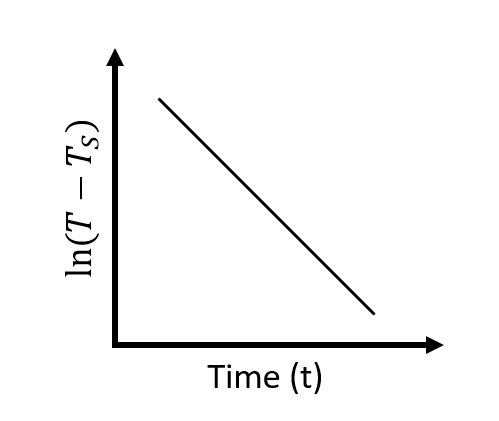Question
Question: A hot liquid in a big room. The logarithm of the numerical value of the temperature difference betwe...
A hot liquid in a big room. The logarithm of the numerical value of the temperature difference between the liquid and the room is plotted against time. The plot will be very nearly
A) a straight line
B) a circular arc
C) a parabola
D) an ellipse
Solution
The hot liquid kept in a big room loses its temperature with time. The rate at which the liquid cools is directly proportional to the temperature difference between the liquid and the surroundings of the room. This is known as Newton’s law of cooling.
Complete step by step solution:
When a hot liquid is kept in a big room, the liquid will begin to lose its temperature with time and the surrounding walls of the room will gain the thermal energy of the liquid. Since the room is big, we can assume that the energy dissipated by the liquid will not change the temperature of the surroundings. According to Newton’s law of cooling, the rate of cooling of the hot liquid is directly proportional to the temperature difference between the liquid and the surroundings of the room. If T is the temperature of the hot liquid and TS is the temperature of the surroundings of the room, then according to Newton’s cooling law
dtdT∝(T−TS)⇒dtdT=k(T−TS)
Where, k is a constant of proportionality. Now we bring the (T−TS) term on the LHS and dton the RHS, we get
⇒(T−TS)dT=kdt
Performing integration on both sides, we get
⇒∫(T−TS)dT=∫kdt⇒ln(T−TS)=kt+C
Where, C is the constant. From the above equation, we can say that
⇒ln(T−TS)∝t
From the above relation, if a graph is plotted between ln(T−TS) and t, then it will be a straight line as shown below.

∴ The plot will be very nearly a straight line. Hence option (A) is correct.
Note:
Newton’s law of cooling is only applicable to small temperature differences. So if the room would have been small the temperature difference would be large and hence, Newton’s law would not be applicable. In such cases, Stefan’s law is to be used.
